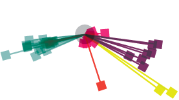Document Scanning
The Centre has vast experience in scanning documents in the broadest sense of the term – from large maps, to manuscript material, to modern and historical printed material, statistical tables, and content in a variety of languages.
Document scanning is potentially complex. In the simplest terms we offer a bulk scanning service through which we can scan thousands of pages a week. Sample images are checked for quality control purposes and we can assist you in choosing the best format in which to scan the documents. This includes a choice of file type – from TIF images which offer high quality as they are not compressed, to JPG files which can be compressed considerably resulting in the need for less storage space but with an impact on quality – to a choice of whether to scan in black/white, greyscale or 24 bit colour. We can also advise of dpi – dots per inch – which impacts on image resolution. Basically the more dots per inch the better the scan quality but the image will take longer to scan and will require more storage space. In general we offer a dpi service ranging from 300 to 1,200 although have scanners that can process images up to 4,800 dpi.
Beyond ‘basic’ image scanning we offer a range of additional services. These include:
- Image Enhancement: Improving on the original image through the use of image processing software. This is particularly pertinent to historical printed documents and manuscript (handwritten) material which in its original form can be difficult to read.
- Metadata: If you have a large number of images it is likely that you will need some mechanism to find particular pages. We offer a metadata service which can provide basic – and inexpensive – search mechanisms such as recording page numbers, dates the document was produced, or headings and subheadings in the data. Metadata and its importance is described in detail at this site https://en.wikipedia.org/wiki/Metadata
- Machine Readable Text: An image of a document is simply that, a picture. We can use a variety of techniques to convert text to a machine-readable form so that it can be searched or copied and pasted into other documents. This can include the use of Optical Character Recognition techniques – discussed in detail elsewhere on our website – to the manual transcription of handwritten material. We have a team of trained palaeographers who have much experience in reading and transcribing difficult hands.
In summary we have the capacity to take vast quantities of printed material and make it accessible and usable. Exemplar projects where we have carried out this sort of work include work with the Northern Ireland General Registrar’s Office in which we processed more than three million pages of vital registration data and HISTPOP in which we scanned all of the printed pages of the British and Irish Censuses. You can find out more about these projects elsewhere on this website.
For more information please contact us to discuss the many options available in document scanning.

